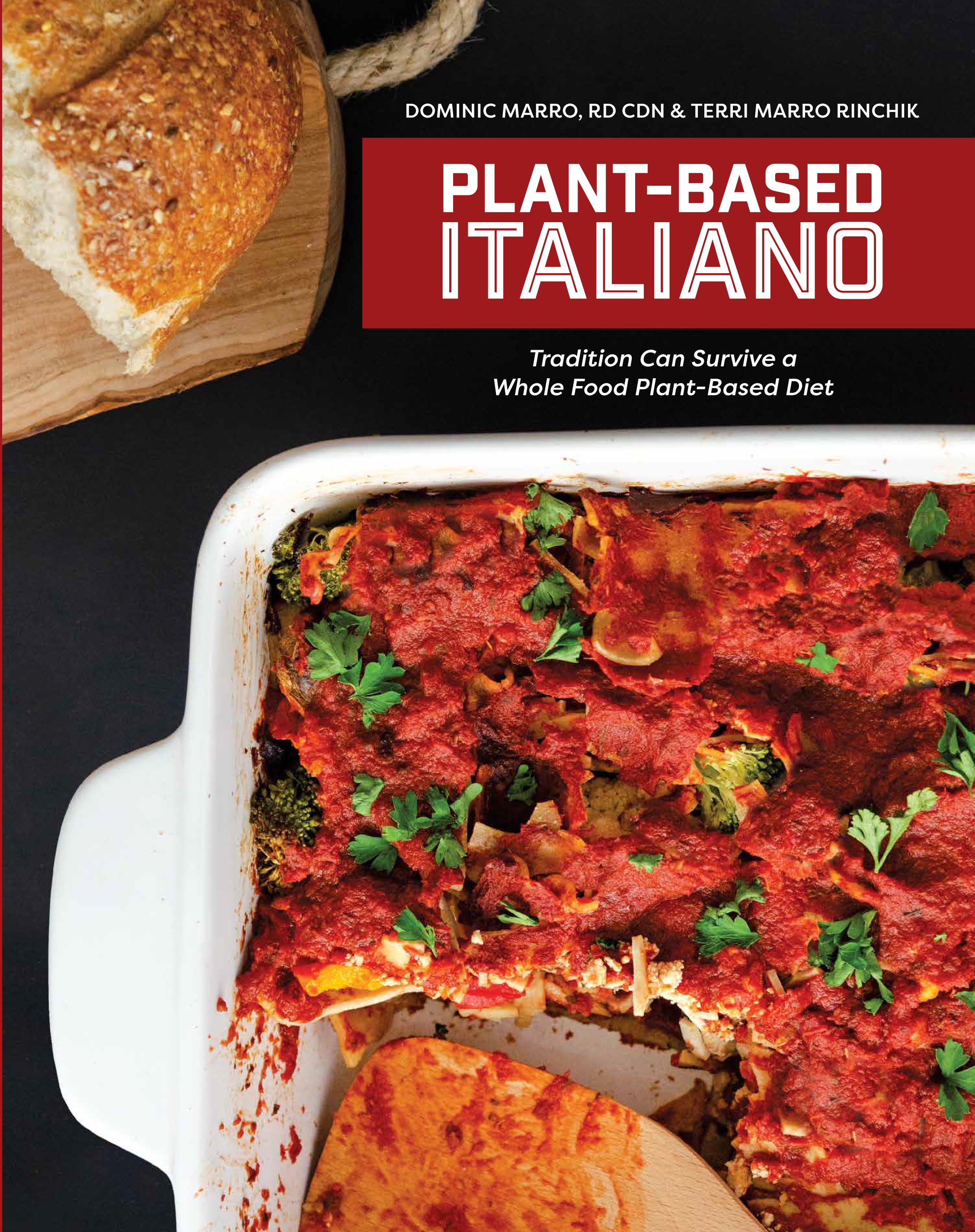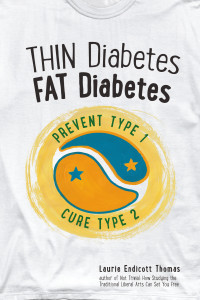This film from 2014 called “Low Carb Diet: Fat or Fiction” makes a convincing case that a low carb, high fat (LCHF) diet should be promoted to treat Type 2 Diabetes. However, it’s only convincing to those who are unaware of the evidence supporting a WFPB lifestyle as a means to prevent and treat chronic disease
The film includes a variety of professionals who promote a low-carb, moderate protein, high fat (LCHF) diet. It also includes athletes and type 2 diabetes patients who have shown clear short-term benefits by adopting such a diet. One explanation that the ‘experts” give for these results is that it makes sense for people who have impaired carbohydrate metabolism to greatly limit their carbohydrate intake. The implication is that people with impaired carbohydrate metabolism (caused by insulin resistance) will always have impaired carbohydrate metabolism.
When insulin resistance results in acute symptoms (ie. frequent urination, excessive thirst, fatigue, etc…) the usual response is to prescribe the drug Metformin and a diet that limits carbohydrates.
Metformin both increases the insulin sensitivity of cells and reduces the production of endogenous glucose by the liver. A diet lower in carbohydrates minimizes blood glucose spikes. People who are prescribed Metformin are usually on it for life. Therefore, they remain sick. Healthy people don’t need medications. It’s also important to remember that all medications have other effects.
It’s easy to understand why diabetic patients would accept the Metformin and LCHF diet route; it is likely that they will be able to manage their short-term diabetes symptoms.
They also may consider a low fat WFPB diet as it has also been shown to be effective as a treatment for type 2 diabetes. I imagine patients looking at both options will choose the diet that best matches their dietary preferences.
If you or someone you care about is wondering which route to take to treat or prevent type 2 diabetes, I’d like to make the case for a low-fat WFPB diet as the best way to go.
I’d like to start by reminding you that type 2 diabetes is the result of impaired glucose metabolism due to insulin resistance (IR). It appears that IR can result from the accumulation of intramyocellular lipids (fat in muscle cells) caused by an unhealthy diet high in animal foods and highly processed foods rich in oils, refined sugar and refined flour. Intramyocellular lipids inhibit insulin’s ability to allow glucose entry into muscle cells. Therefore glucose eventually builds up in the blood.
Responding to type 2 diabetes by taking Metformin and following a LCHF diet is analogous to a homeowner who responds to an overflowing sink with a mop and bucket, a plunger and reducing water flow from the faucet.
You see the sink has an impaired drain that is resistant to allowing hard water to enter. The clog is the result of mineral deposits from the hard water. Think of the mineral deposits acting like intramyocellular lipids act when they block insulin and glucose from entering into muscle cells
The drain allows water to enter, but very slowly. Things go well for awhile, but eventually the sink overflows and a bad symptom develops. (ie. Water overflows making a mess of the floor). So an approach similar to the Metformin and LCHF approach to treat type 2 diabetes would be the following:
- mopping up the floor,
- slowing the flow of water from the faucet, and
- the daily use of a plunger to help water to flow down the drain.
Unless there is a change in the type of water used, from hard to soft, limiting the flow of water from the faucet and the use of a plunger will always be necessary to keep the floor dry. Damage to the pipes from hard water is likely to continue.
Although the plunger (Metformin) and reduced water flow from the faucet (LCHF diet) can keep the water from overflowing (blood glucose from rising) major problems are likely to arise in the future. For example:
- continued use of hard water is likely to result in rotted pipes which can cause major water damage to pipes or
- in the case of the diabetic patient, a diet high in fat and animal foods is likely to result in heart attacks, strokes, kidney damage, and other chronic diseases.
A better solution for the homeowner would be to have a water softening system installed to put an end to the cause of the clog – mineral deposits from hard water.
The plunger and a restriction in water flow is just compensating for the clogged drain. It is successful in preventing a wet floor. However, it will not protect the home from future water damage from rotting pipes.
For the diabetic patient, severely restricting carbohydrates, as is recommended in the film, only compensates for insulin resistance caused by intramyocellular lipids. It can be successful in controlling blood glucose, but a diet so high in animal foods puts the patient at high risk for life threatening/altering diseases.
A better solution for the diabetic patient is to follow a low-fat WFPB diet to increase insulin sensitivity by reducing intramyocellular lipids. A low fat WFPB diet not only can reverse type 2 diabetes, it can prevent and reverse heart disease, our number 1 killer,
In the 1940’s, Dr. Walter Kempner showed that an extreme diet of rice and fruit (loads of carbohydrates) can actually reverse diabetic retinopathy in some patients – a condition that many still consider irreversible.
I wonder if people who reverse their diabetic retinopathy on a rice and fruit diet would be told by their endocrinologists that it would be better for them to start eating a diet high in cheese, butter, liver, coconut oil and beef tallow? These foods were encouraged in the film! As far as I know, such a diet has not been shown to reverse diabetic retinopathy or greatly improve conditions such as severe renal (kidney) insufficiency, severely high blood pressure and cardiac angina pain. A rice and fruit diet has been shown to dramatically improve all of these conditions. When some patients lost too much weight just eating rice and fruit, , Dr Kempner added sugar to their diet in order to keep overall protein low to protect kidney function.
Admittedly this is an extreme diet and does not represent what we recommend for most people. Dr. Kempner encouraged some vitamin supplementation as a precaution against dietary deficiencies. The point to be made is that a diet extremely high in carbohydrates reversed disease in seriously ill patients.
The fact is, a low fat diet WFPB diet – a diet dominated by fruits, vegetables, whole grains and legumes (beans, peas and lentils) prevents the development of insulin resistance. Like soft water that prevents the clogging of pipes with mineral deposits, a low fat WFPB diet prevents “clogging” muscle cells with intramyocellular lipids (fat). Therefore, it can prevent the development of impaired glucose metabolism, even in people genetically predisposed to developing type 2 diabetes.
People must begin to realize that just as there are many unhealthy ways to lose weight, there are also unhealthy ways to improve biomarkers. What really matters is disease outcomes.
Dr. Tim Noakes, the sports physiologist in the film, is very influential among runners.
I wrote an article about him in November of 2013. Back then, he still required Metformin even though he was eating a low-carb, high fat diet and exercising regularly. Clearly his diet did not help his insulin resistance. Like the plunger won’t keep the homeowner’s pipes from rotting from hard water, Metformin and a LCHF diet are not likely to protect Dr. Noakes’ arteries from rotting. I hope he is an exception to the rule.
If you found this article useful, you may like an earlier article that reviewed the debate between T Colin Campbell (low fat WFPB diet advocate) and Dr. Eric Westman (Atkins diet advocate).
Stay healthy and strong!






 E Excerpt from Laurie Endicott Thomas’s amazing book Thin Diabetes – Fat Diabetes by clicking here!
E Excerpt from Laurie Endicott Thomas’s amazing book Thin Diabetes – Fat Diabetes by clicking here!
Any thoughts on these diets for diabetes
http://onlinelibrary.wiley.com/doi/10.1002/dmrr.2519/pdf
http://www.hindawi.com/journals/jnme/2012/856342/
http://medicc.org/mediccreview/articles/mr_119.pdf
http://www.ncbi.nlm.nih.gov/pmc/articles/PMC3477773/pdf/JNUME2012-856342.pdf
http://carbsanity.blogspot.com/2014/01/carbohydrate-and-diabetes.html
http://carbsanity.blogspot.com/2014/01/carbohydrates-and-diabetes-part-ii.html